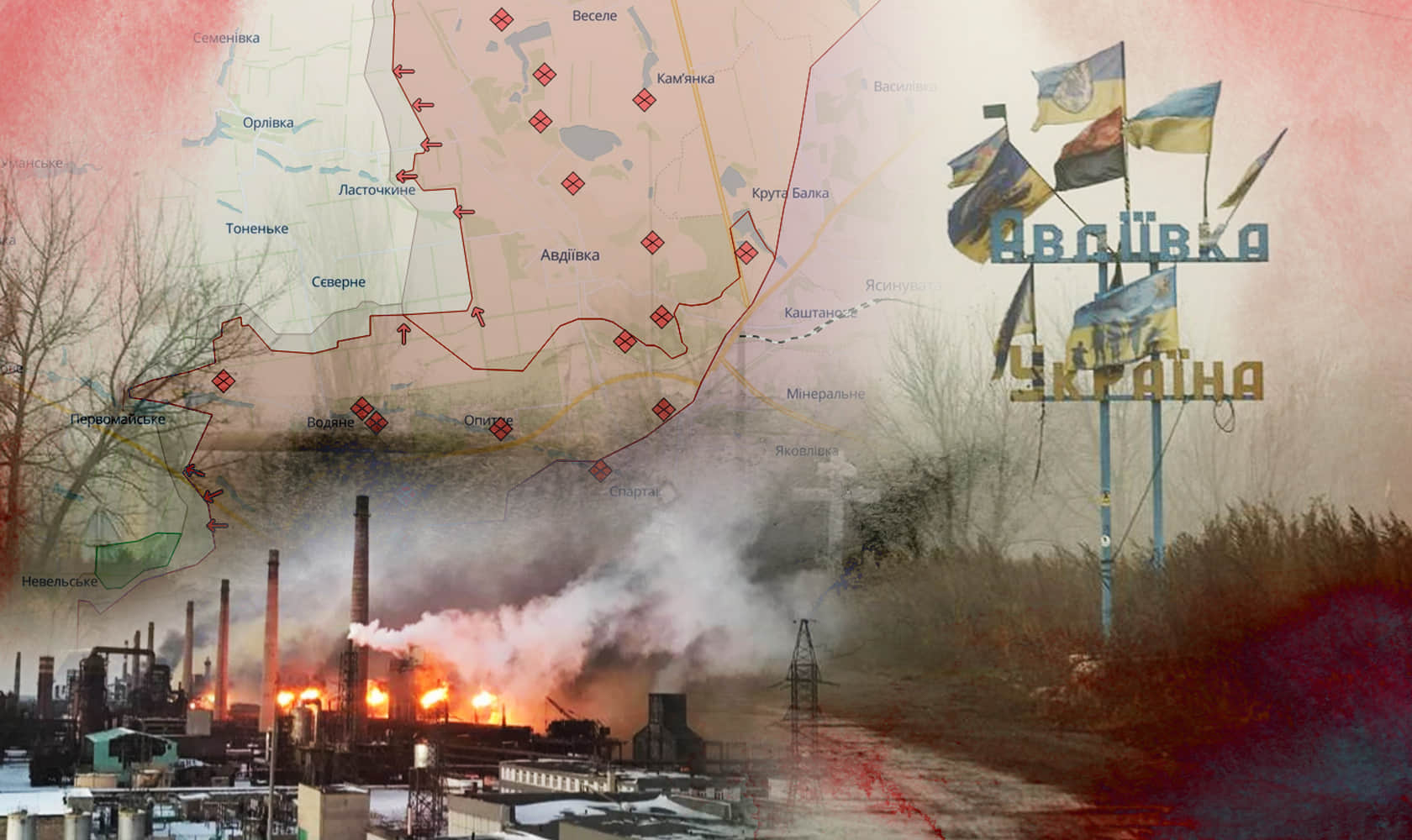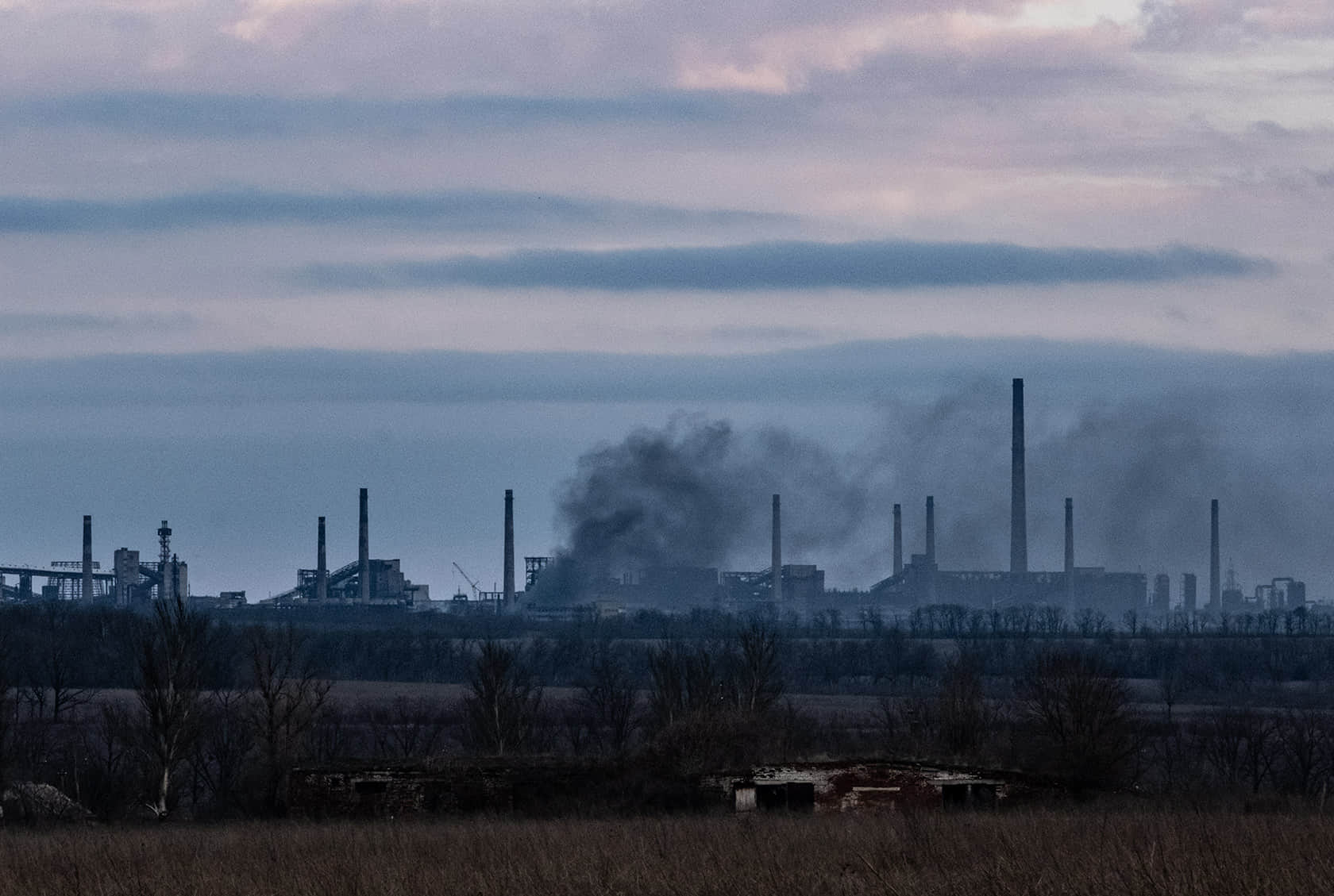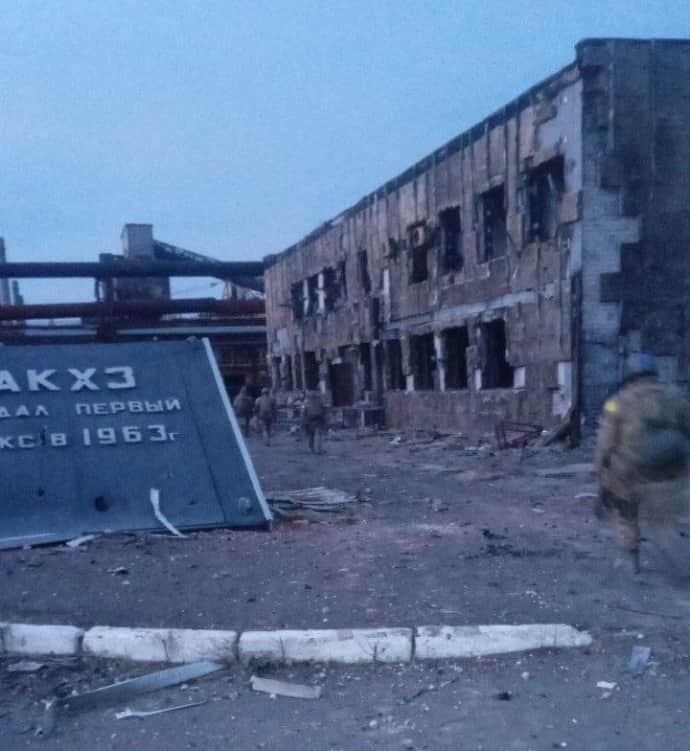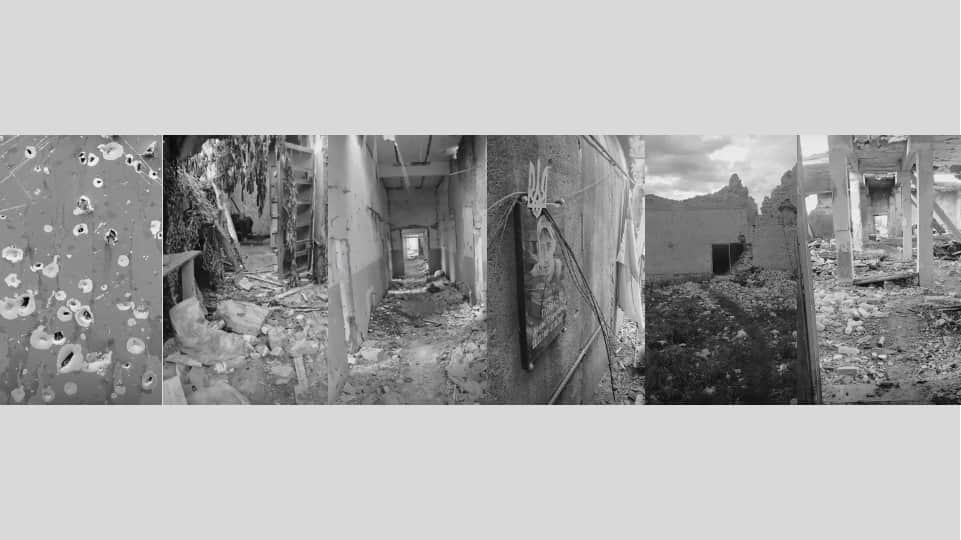The last days of Avdiivka: what led to the withdrawal of Ukrainian forces from the city and how it took place

Be worthy of this life that the guys are gifting to you today. Tell the truth, follow your conscience, take care of your health, expose lies, think only with your head, and choose the good.
Mariia Yankevych, sister of Nazar Yankevych, a 19-year-old soldier of the 3rd Assault Brigade, who was killed in Avdiivka on 12 February 2024
On 17 February 2024, Russia completely captured Avdiivka, a city 10 km away from Donetsk that used to be home to 30,000 people.
Russia had spent ten long years trying to capture Avdiivka, from April 2014, when Russian-controlled militants seized the city for three months, to February 2024, by which time Avdiivka had become a "city of eternal fire".
The last month and a half were decisive in this battle. During this time, the Russians reached the rear of the Ukrainian positions in the south of the city and carried out a major strike below the Avdiivka Coke Plant – in Avdiivka’s dacha (summer house) area – cutting the city in half.
The last time Ukrainska Pravda journalists visited Avdiivka was on 23 December 2023, just before Christmas. Rather than getting ready for the festivities, local residents were preparing for the war to continue – queuing to stock up on humanitarian aid amid burnt-out apartment blocks and a few tattered Ukrainian and EU flags. The sound of munitions being fired by Ukrainian forces and incoming "strikes" from the Russians were interrupted by the mournful whining of a dog that had fallen into an open manhole.
This is how we saw Avdiivka, and this is how we will remember it.
This article is about the last difficult month and a half in Avdiivka. Some of the soldiers mentioned have asked to remain anonymous.
A double blow to the defence: an underground pipe and infiltration through dachas
Until early January 2024, the Russians’ plan to capture Avdiivka seemed to have been to enter the Avdiivka Coke Plant (Koksokhim, as it is widely known) and cut off the Ukrainian forces’ main supply road, which runs through Lastochkyne and past the famous road sign bearing the name of the city. That was the shortest and easiest way.
That’s why right from the start of the active phase of the offensive in October 2023, the Russians kept attacking the coke plant with both infantry and vehicles, later bombarding it with MLRS and KAB gliding bombs.
During this time, instead of the black clouds that used to belch out from the chimneys, thick plumes of smoke from Russian strikes would regularly rise up over what had once been the largest coke plant in Europe. The prospect of dying of air pollution one day in the far-distant future was replaced by the possibility of dying any second – from the moment a guided bomb was dropped to the moment it landed.
But the Russians’ plan to sever the city along the coke plant didn’t work.
The plant was held by the Ukrainian army until they withdrew from the city on 17 February, the commander of the 2nd Battalion of the Separate Presidential Brigade of the Armed Forces of Ukraine, who goes by the alias Samurai, told Ukrainska Pravda. His battalion had defended the northern flank of the Avdiivka front for a year, including the section at the coke plant.
"The coke plant’s defences were quite strongly built. We’d been stationed there for days – all possible enemy actions on this front had been calculated, so the Russians were just banging their heads against the plant, losing manpower and equipment. Perhaps that's why they changed the direction of their main attack," Samurai says.

There were actually two unexpected Russian blows to Avdiivka's defences: one in mid-January, and the main one in early February 2024.
The first blow was an entry into the rear of the Ukrainian positions in the south, through an underground pipe, which occurred around 15 January. Two Special Operations Forces soldiers who started working in the city shortly afterwards said that Russians were moving along the main water pipe that fed the Donetsk water filtration station.
This is a service water pipe about 1.3-1.4 metres high. It was mostly empty at the time: Avdiivka had been cut off from the water supply in late 2021 because of the attacks. The remaining water, the Special Forces soldiers assumed, had been drained off by the Russians themselves.
Other sources in the Ukrainian military said that the Russians approached this operation quite skilfully. They not only took advantage of the element of surprise, but also dug tunnels to allow their assault groups to advance, including exit holes every 100 metres.
Russian soldiers revealed on their Telegram channels that they had covered up the noise of the underground work with mortars and artillery.
"The hardest thing isn’t getting into the pipe – people can climb through pipes that are 0.5 metres wide. The hardest thing is getting an oxygen cylinder into it in order to cut through the pipe and make the holes. One of these cylinders weighs about 100 kg, so a single person can’t pull it," one of the Special Operations Forces soldiers explained.
"The Russians are still using it," he told Ukrainska Pravda on 6 February, 11 days before the Ukrainian Defence Forces withdrew from Avdiivka. "Why our forces don’t monitor it, I don’t know."

The second and main blow was the Russians’ infiltration of the city through Avdiivka's dachas, the area between the sand quarry and the lakes. This happened in the first few days of February and was decisive in the battle for Avdiivka.
Moving through the residential area, the Russians reached a major asphalt road, Industrialnyi Avenue, on 12-14 February, and cut the city in half. The coke plant was in the north and the city centre in the south.
That is how the main road to Avdiivka, which went through Lastochkyne and into Industrialnyi Avenue, was lost, and any movement around the city became extremely dangerous.
A few days before the key road to Avdiivka was lost, the 3rd Assault Brigade – one of the strongest formations in the Ukrainian Armed Forces – had been sent to the area on the orders of Valerii Zaluzhnyi, then the Commander-in-Chief of Ukraine's Armed Forces. The commander of the battalion's 3rd Company, alias Foka, told Ukrainska Pravda that the area of responsibility of the brigade’s 1st Assault Battalion was the residential area that the Russians were moving through from the quarry and lakes.
We spoke to him on the phone on the second day after Ukrainian forces had left the city. At the time, Foka was on his way to the funeral of a brother-in-arms of his who had fallen in the Battle for Avdiivka.
Contrary to the assumption that the 3rd Assault Brigade was sent into the city to help the existing garrison withdraw from Avdiivka, Foka argues that they were brought in to retake and hold the positions.
This task was virtually impossible to accomplish, however, said Rodion Kudriashov, Deputy Brigade Commander of the 3rd Assault Brigade, since some of the positions had been abandoned by adjacent units and some had been destroyed. Russian bombardments and a lack of Ukrainian air defence made it impossible to erect new defence positions.
"It wasn’t till later that we found out that the area we’d taken over was the main focus of the Russian attack," Foka said. "All their forces were amassed there: four brigades that took turns attacking and two in reserve. The ratio of [Ukrainian] infantry [to Russian] was 1 to 12, with artillery about 1 to 10, and ammunition also 1 to 10. There were 80-110 guided bomb units being dropped daily. On top of that, they had their aircraft as well.
We never saw that level of intensity of infantry and artillery in Bakhmut. My guys who’d been in Mariupol said: 'F**k Avdiivka, we'd rather fight in Mariupol again'."
The 1st Battalion managed to push the Russians back a little – as far as the railway. But the artillery fire was so heavy that they were unable to gain a foothold. The Russians were razing street after street.
Once it became obvious that the assault was pointless, the battalion gradually moved west and eventually joined another part of the brigade at the coke and chemical plant.


The Russians repositioned their forces to storm the 9th quarter, an area of high-rise buildings that provided better battlefield visibility.
This is how the defence of Avdiivka on 15-16 February narrowed down to two points on the map – the coke and chemical plant and the 9th quarter itself.
Fortress Zenit, escape from the encirclement, and the shooting of wounded Ukrainian prisoners of war
The second fortification in Avdiivka – after the industrial zone, which the Russians had seized in December 2023 – was the iconic fortified area known as Zenit.
Zenit is the base of a former air defence unit 1-2 km south of the city which had concrete structures and underground bunkers.
The Ukrainian army had stood its ground at this position for ten years of the Russo-Ukrainian war. It had survived the battles for the Butivka mine area, Donetsk airport, and almost two years of the full-scale invasion.
"It was considered the most fortified point of the front! If Zenit falls, Avdiivka falls," Ukrainska Pravda was told by a soldier from a mechanised brigade who used to fetch ammunition from this position during the ATO. [The ATO, or Anti-Terrorist Operation, is a term used from 2014 to 2018 by the media, the government of Ukraine and the OSCE to identify combat actions in parts of Donetsk and Luhansk oblasts against Russian military forces and pro-Russian separatists – ed.]
Viktor Biliak is a military volunteer in a company of the 110th Brigade, which joined the defence of Zenit in late March 2022. Viktor counted every day of the war that he spent at this fortified area. The total came to 620.
"Our headquarters was the main place that kept everything going. It was a two-storey underground bunker with underground car parks. There was good infrastructure and plenty of space," he said during a phone call with Ukrainska Pravda.

The Russians had begun encircling Zenit almost a month before the Ukrainian army withdrew from the city, in mid-January 2024, when they managed to sneak into the city via the underground pipe. This cut off the left flank of Zenit's defenders. Viktor says there hadn't been a right flank for quite some time, since the Russians captured the village of Opytne near Avdiivka.
"Back then, the Russians used to launch heavy attacks on our supply lines," Viktor said. "A lot of vehicles would be on fire, and snipers were always watching. Literally, if you left our bunker, a sniper would take you out. A [Russian] machine gunner was monitoring our movements on the unit's territory.
Then they started to storm us from behind. Things are fine when they’re in front of you and you’re fighting. When they’re to the left of you, well, it is what it is. When they're to the right of you, it's getting tough. But when you're being attacked from all sides... We were basically doing all-round defence."
The defence was made even more challenging by the lack of effective command. Viktor admits that chaos reigned in his company since, for various reasons, they had no commander, no sergeant major, and no platoon commanders. Privates first class "who had proved themselves and could assume responsibility for a certain area" were in charge.
A few days before the Ukrainian troops withdrew from the city, the soldiers at Zenit were finally ordered to leave. They had to walk one kilometre north and get closer to the 9th quarter of Avdiivka. The retreat was planned in small groups from 14 to 15 February.
Viktor described that walk. "We realised we’d be fired on, so it was just a matter of luck who was going to make it. Besides, it was pitch black: you couldn't see a thing, so you just followed the sound of the drone. As you walked, you saw soldiers who’d been hit lying by the roadside.
The group I was walking with got lost – they were hit, I don't know what happened to them. I was walking first, and being a young guy, I had at least some energy. I just ran," he added.
Six wounded Ukrainian soldiers and one Russian prisoner-of-war stayed at Zenit, waiting for a promised evacuation vehicle. Viktor himself was supposed to be among them, as he had received a facial injury while pulling one of his brothers-in-arms deeper into the position. However, he later decided to leave on foot.
The evacuation vehicle never arrived.
On 16 February, Brigadier General Oleksandr Tarnavskyi, Commander of the Tavriia Operational Strategic Group, officially announced that Ukraine’s forces had moved away from Zenit "to protect personnel" and "improve operational conditions".
The next day, 17 February, independent Ukrainian investigative outlet Slidstvo.Info reported that three families had identified the bodies of their loved ones in a video circulating on Russian Telegram channels. The three were Ivan Zhytnyk, whose video call with his sister about the critical situation on the front line went viral on social media, Heorhii Pavlov, and Andrii Dubnytskyi.
The killing of two other soldiers, Oleksandr Zinchuk and Mykola Savosik, was later reported by the 110th Brigade itself. There is no precise information about the sixth serviceman, who was presumably from an attached unit.
The tragic story of the wounded servicemen left behind was explained by the 110th Brigade as follows: the brigade had no access to its military personnel because the Zenit stronghold had been completely encircled. So they went through the coordination centre and organisations that conduct prisoner swap negotiations to request assistance from the Russians in having those soldiers treated as prisoners of war.
"The enemy informed the process coordinators that they agreed to evacuate and assist our wounded, and subsequently to exchange them. Our servicemen were instructed to save their own lives," the brigade’s statement reads.
Viktor Biliak shares his thoughts on this. "Instead of getting us out, they sent reinforcements. They should have evacuated us, and taken away our weapons and equipment, which we mostly buy with our own money – thermal imagers, drones, generators, Ecoflow [power generators], vehicles. And they should have mined the positions. The conditions were right – it was foggy, and there were vehicles."
Ukrainska Pravda contacted Dmytro Lykhovii, the spokesman for the Tavriia Operational Strategic Group, and Oleh Honcharuk, the Head of Strategic Communications of the Donetsk Operational Tactical Group, and asked them the following questions.
1. Was the control of the underground pipe through which the Russians were able to infiltrate Ukrainian positions considered during the city's defence planning?
2. Was the Tavriia Operational Strategic Group (the Donetsk Operational Tactical Group) aware of the significant shortage of military personnel for Avdiivka’s defence?
3. Why were the military personnel holding the defence positions at Zenit not evacuated on time?
Both these groups said that they would need time to find the answers to our questions and advised us to send official enquiries to the senior leadership. We will add their responses to this article when we receive them.
The officers in command of the front and the army at the time of the Ukrainian military's withdrawal from the city were: Major General Eduard Moskaliov, Commander of the Donetsk Operational Tactical Group; Brigadier General Oleksandr Tarnavskyi, Commander of the Tavriia Operational Strategic Group, and Oleksandr Syrskyi, Commander-in-Chief of the Armed Forces of Ukraine.
Withdrawal and occupation
On the night of 17 February, after several weeks of the hellish situation in Avdiivka, Commander-in-Chief Oleksandr Syrskyi finally announced the withdrawal of Ukrainian forces from the city.
Some of the people who spoke to Ukrainska Pravda for this article said the order to withdraw was given in good time. Samurai, the commander of the 2nd Battalion of the Separate Presidential Brigade of the Armed Forces of Ukraine, stressed that they managed to leave the city without losses. The soldiers of the 25th Separate Assault Battalion of the 47th Separate Mechanised Brigade, the last to leave the Avdiivka Coke Plant, also said they had withdrawn without losses.
But most of Ukrainska Pravda's sources in the military made no attempt to conceal their anger, insisting that the order should have been given a day or even two days earlier. In addition to Zenit being encircled, with the 110th Brigade defending it, the 2nd Assault Battalion of the 3rd Separate Assault Brigade also fell into operational encirclement in the dacha area.
The soldiers who talked to Ukrainska Pravda had been fearful about the situation in Avdiivka, calling it a potential "second Azovstal" [the steelworks that was the last stand of Ukrainian defenders in Mariupol – ed.].
Somewhat unexpectedly, the Commander-in-Chief announced his decision to withdraw the troops from Avdiivka before the withdrawal actually took place. Previously, during the withdrawals from Sievierodonetsk, Lysychansk and Bakhmut, such statements were either made afterwards or not made at all.
Why were the Russians able to capture Avdiivka?
The American Institute for the Study of War has provided a short, accurate and entirely correct answer to this question: the reason was Russia's air superiority.
In Avdiivka, the Russians, for the first time on a large scale, used KAB glide bombs to support their infantry from the air. Moreover, as always, they had more infantry, equipment and ammunition.
However, the answer to the question "why" would be incomplete without mentioning the exhaustion of the 110th Brigade, the main Ukrainian unit that had defended Avdiivka for two years without rotations amidst a catastrophic shortage of infantry, delayed reinforcements, and inevitable shortcomings in the city's defence.
"They didn't treat the illness systematically; instead, they haphazardly threw random pills at it," a source from one of the brigades in the Avdiivka garrison told Ukrainska Pravda. "They didn't pull out the ticks from around Avdiivka in a timely manner. That led to the operational encirclement and allowed the enemy to establish a foothold to further envelop the Avdiivka garrison."
There are still around 700 civilians in the captured city, Vitalii Barabash, the mayor, told Ukrainska Pravda in an interview. Interrogations with at least two of them – their eyes taped, with the Russians claiming they are "disguised Ukrainian servicemen" – have already been posted by Russian soldiers on their Telegram channels. There’s also a video featuring a local church caretaker who is almost in tears as he embraces the Russian occupiers.
What’s next?
There is no point on the map in this war that anyone would dare to call "non-strategic". Everything has been and continues to be strategic – Sievierodonetsk, Lysychansk, Bakhmut, Soledar, Avdiivka. Every height, river, and artillery-blasted forest plantation. Because all of it is our homeland.
By capturing Avdiivka and its flanks, the Russians have pushed back the local section of the contact line, formed during the Anti-Terrorist Operation and the Joint Forces Operation, by 7-13 km. In doing so, they have partially shielded occupied Donetsk from Ukrainian artillery and significantly complicated any potential Ukrainian advance towards the city.
After capturing Avdiivka, the Russians, predictably, did not stop: they began to advance towards neighbouring Lastochkyne. In the longer term, they could advance both to the east – towards Selydove and eventually Pokrovsk – and to the north – towards Kostiantynivka and the entire agglomeration of Kramatorsk.
The Russians are not abandoning their intentions to seize the whole of Donetsk Oblast. The Russo-Ukrainian war is entering its eleventh year.
Olha Kyrylenko, Ukrainska Pravda
Translation: Myroslava Zavadska, Artem Yakymyshyn and Sofiia Kohut
Editing: Ivan Zhezhera and Teresa Pearce